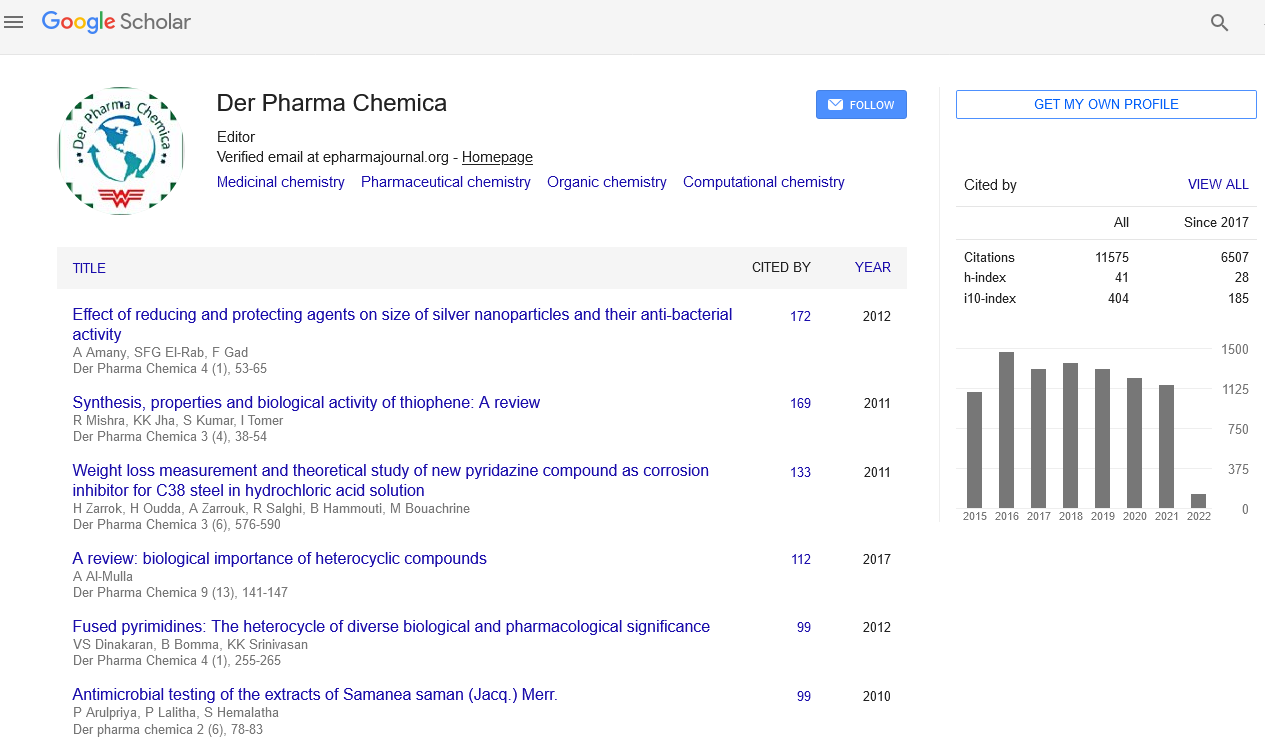Abstract
Discovery of potential xanthine oxidase inhibitors using in silico docking studies
Author(s): Muthuswamy Umamaheswari, Arumugam Madeswaran, Kuppusamy Asokkumar, Thirumalaisamy Sivashanmugam, Varadharajan Subhadradevi, Puliyath JagannathNew drugs for the inhibition of the enzyme xanthine oxidase are in development and they have to be screened before being considered for preclinical and clinical evaluation. In order to understand the mechanism of ligand binding and to identify potent xanthine oxidase inhibitors, a study involving molecular docking and virtual screening has been performed. The objective of the current study is to evaluate the xanthine oxidase inhibitory activity of flavonoids using in silico docking studies. In this perspective, flavonoids like Butein, Fisetin, Diosmetin, Tricetin, Genistein, Tricin, Vitexycarpin, Herbacetin, Biochanin, Rhamnetin, Isorhamnetin, Robinetin, Peonidin and Okanin were selected. Allopurinol, a known xanthine oxidase inhibitor was used as the standard. In silico docking studies were carried out using AutoDock 4.2, based on the Lamarckian genetic algorithm principle. The three important parameters like binding energy, inhibition constant and intermolecular energy were determined. The results showed that all the selected flavonoids showed lesser binding energy ranging between -7.86 kcal/mol to -5.40 kcal/mol when compared with that of the standard (-4.47 kcal/mol). Intermolecular energy (-9.95 kcal/mol to -7.49 kcal/mol) and inhibition constant (1.72 μM to 110.19 μM) of the ligands also coincide with the binding energy. All the selected flavonoids consist of benzopyran ring in its basic nucleus, which would have contributed to its xanthine oxidase inhibitory activity. These molecular docking analyses could lead to the further development of potent xanthine oxidase inhibitors for the prevention and treatment of gout and related inflammatory conditions.
Select your language of interest to view the total content in your interested language
Google Scholar citation report
Citations : 25868
Der Pharma Chemica received 25868 citations as per Google Scholar report
Der Pharma Chemica peer review process verified at publons
DOWNLOADS




